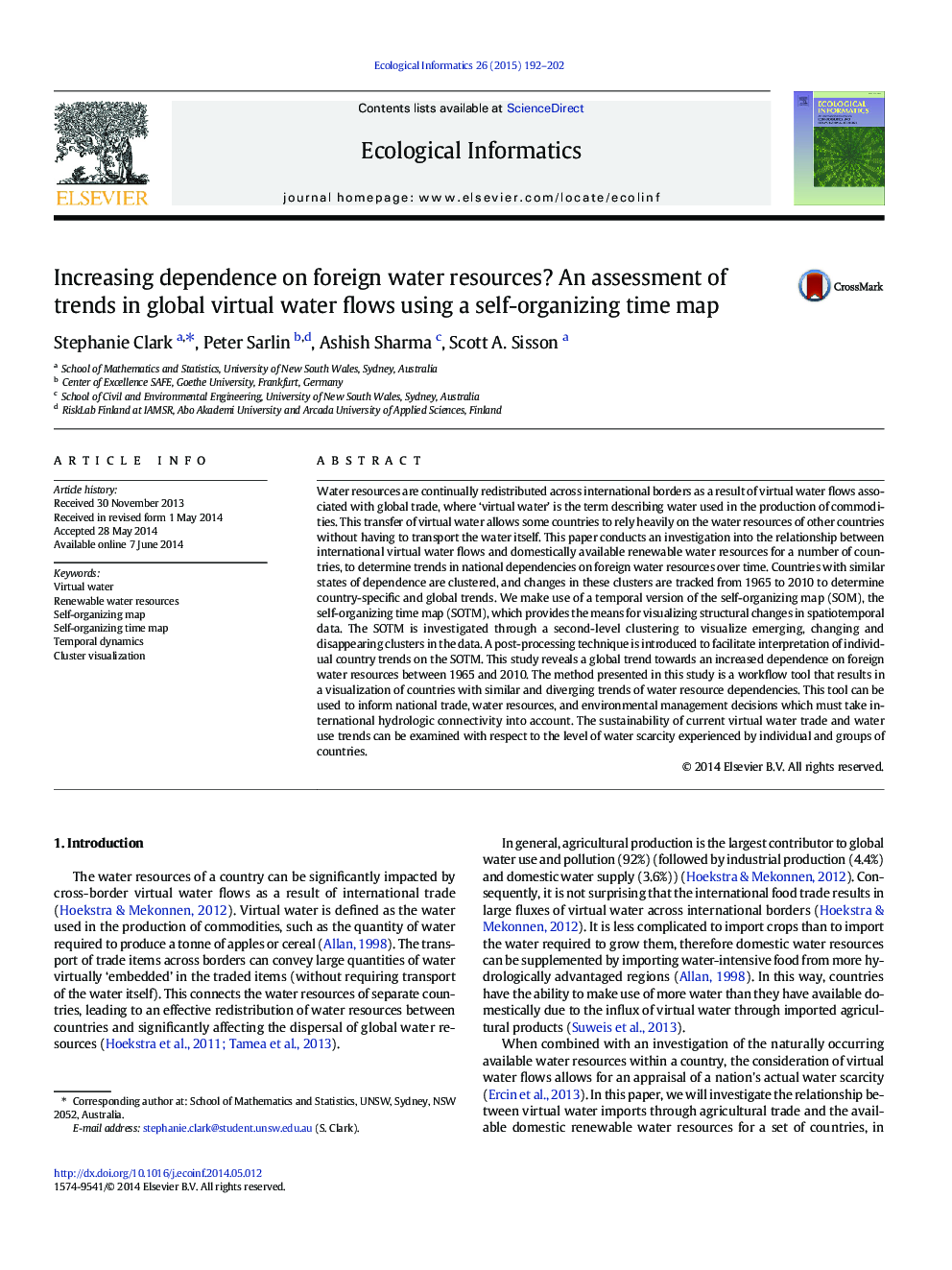| Article ID | Journal | Published Year | Pages | File Type |
|---|---|---|---|---|
| 4374841 | Ecological Informatics | 2015 | 11 Pages |
•irtual water imports/exports can supplement/diminish domestic water resources.•172 countries are clustered by trends in hydrological independence from 1965-2010.•Individual country trends are identified over the timeline.•A global increase in dependence on foreign water resources is determined.•The SOTM framework is extended for trend visualisation of individual items.
Water resources are continually redistributed across international borders as a result of virtual water flows associated with global trade, where ‘virtual water’ is the term describing water used in the production of commodities. This transfer of virtual water allows some countries to rely heavily on the water resources of other countries without having to transport the water itself. This paper conducts an investigation into the relationship between international virtual water flows and domestically available renewable water resources for a number of countries, to determine trends in national dependencies on foreign water resources over time. Countries with similar states of dependence are clustered, and changes in these clusters are tracked from 1965 to 2010 to determine country-specific and global trends. We make use of a temporal version of the self-organizing map (SOM), the self-organizing time map (SOTM), which provides the means for visualizing structural changes in spatiotemporal data. The SOTM is investigated through a second-level clustering to visualize emerging, changing and disappearing clusters in the data. A post-processing technique is introduced to facilitate interpretation of individual country trends on the SOTM. This study reveals a global trend towards an increased dependence on foreign water resources between 1965 and 2010. The method presented in this study is a workflow tool that results in a visualization of countries with similar and diverging trends of water resource dependencies. This tool can be used to inform national trade, water resources, and environmental management decisions which must take international hydrologic connectivity into account. The sustainability of current virtual water trade and water use trends can be examined with respect to the level of water scarcity experienced by individual and groups of countries.
